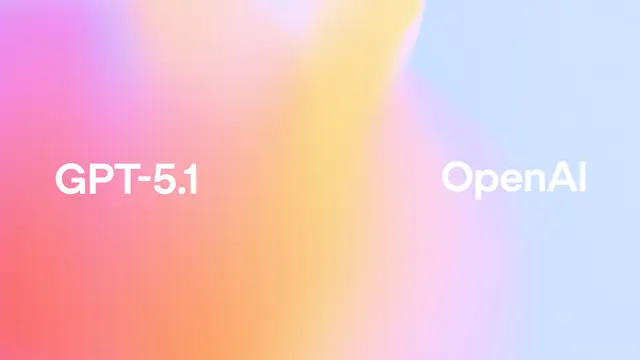Llama
LLaMA (Large Language Model Meta AI) is Meta's open-source family of large language models offering scalable, multilingual, and multimodal capabilities that can be fine-tuned, distilled and deployed anywhere.
https://www.llama.com?ref=aipure

Product Information
Updated:Jul 16, 2025
Llama Monthly Traffic Trends
Llama experienced a 23.0% decline in traffic, likely due to the release of Llama 4 in April 2025, which introduced significant advancements and may have shifted user interest to the newer version. The delay in the Behemoth model and upcoming deprecations of older models could also have contributed to the decline.
What is Llama
LLaMA is a series of advanced artificial intelligence language models developed by Meta (formerly Facebook). Starting with LLaMA 1 in 2023 and evolving through LLaMA 2 to the current LLaMA 3 series, these models are designed to process and generate human-like text while supporting multiple languages. What sets LLaMA apart is its open-source nature, allowing researchers, developers, and organizations to freely access, modify, and build upon its capabilities, making it a cornerstone of democratized AI development.
Key Features of Llama
Llama is Meta's family of open-source large language models that offers multiple versions (3.1, 3.2, 3.3) with varying capabilities and sizes. It features multilingual support, multimodal abilities for image understanding, and lightweight versions for mobile/edge devices. The models range from 1B to 405B parameters and can be fine-tuned, distilled and deployed anywhere, making it accessible for both research and commercial purposes.
Multiple Model Variants: Offers different sized models from 1B to 405B parameters, including lightweight versions (1B, 3B), multimodal models (11B, 90B), and the flagship 405B model
Multimodal Capabilities: Llama 3.2 includes vision-enabled models that can understand images, read handwriting, and analyze visual data like charts and graphs
Comprehensive Development Stack: Includes Llama Stack with built-in safety features, tool calling capabilities, and support for multiple programming languages (Python, Node, Kotlin, Swift)
Multilingual Support: Supports numerous languages including Bulgarian, Catalan, Czech, Danish, German, English, Spanish, French, and many others
Use Cases of Llama
Mobile Applications: Lightweight models (1B, 3B) can run on mobile devices for tasks like discussion summarization and calendar management
Enterprise Data Privacy: Companies like Zoom use Llama for AI assistants that maintain data privacy while enhancing productivity through chat and meeting summaries
Document Analysis: Can extract and summarize information from documents containing images, graphs, and charts for business intelligence
Code Development: Used by companies like DoorDash for code review and answering complex technical questions
Pros
Open source and freely available for research and commercial use
Flexible deployment options (on-premise, cloud, or edge devices)
Strong multilingual and multimodal capabilities
Cons
Requires significant computational resources for larger models
May need fine-tuning for specific use cases
How to Use Llama
Choose a Llama Access Method: Select from multiple options: Hugging Face, GPT4ALL, Ollama, or direct download from Meta AI's official website
Set Up Environment: Install necessary tools based on chosen method. For example, if using GPT4ALL, download and install the application from the official download page
Select Llama Model: Choose from available models: Llama 3.1 (8B, 405B), Llama 3.2 (1B, 3B, 11B, 90B), or Llama 3.3 (70B) based on your needs and computational resources
Download Model: Download the selected model. For GPT4ALL, use the Downloads menu and select Llama model. For Hugging Face, access through their platform interface
Configure Settings: Set up parameters like maximum tokens, temperature, and other model-specific settings depending on your use case
Integration: Integrate the model into your application using provided APIs or SDKs. Choose from Python, Node, Kotlin, or Swift programming languages
Test Implementation: Start with basic prompts to test the model's functionality and adjust settings as needed for optimal performance
Deploy: Deploy your implementation either locally, on-premises, cloud-hosted, or on-device at the edge depending on your requirements
Llama FAQs
Llama is a family of open-source AI models developed by Meta that can be fine-tuned, distilled and deployed anywhere. It includes multilingual text-only models, text-image models, and various sizes of models optimized for different use cases.
Popular Articles

FLUX.2 vs Nano Banana Pro in 2025: Which one do you prefer?
Nov 28, 2025

How to Use Nano Banana Pro Free in 2025 — Complete Guide (Step-by-Step)
Nov 26, 2025

Claude Opus 4.5: The Best Model for Coding, Agents & Computer Use (Full Guide)
Nov 26, 2025

Pixverse Promo Codes Free in 2025 and How to Redeem
Nov 26, 2025
Analytics of Llama Website
Llama Traffic & Rankings
758.1K
Monthly Visits
#76558
Global Rank
#1578
Category Rank
Traffic Trends: Nov 2024-Jun 2025
Llama User Insights
00:00:57
Avg. Visit Duration
1.79
Pages Per Visit
49.61%
User Bounce Rate
Top Regions of Llama
US: 20.27%
IN: 12.42%
DE: 4.17%
KR: 3.07%
NG: 2.8%
Others: 57.27%







